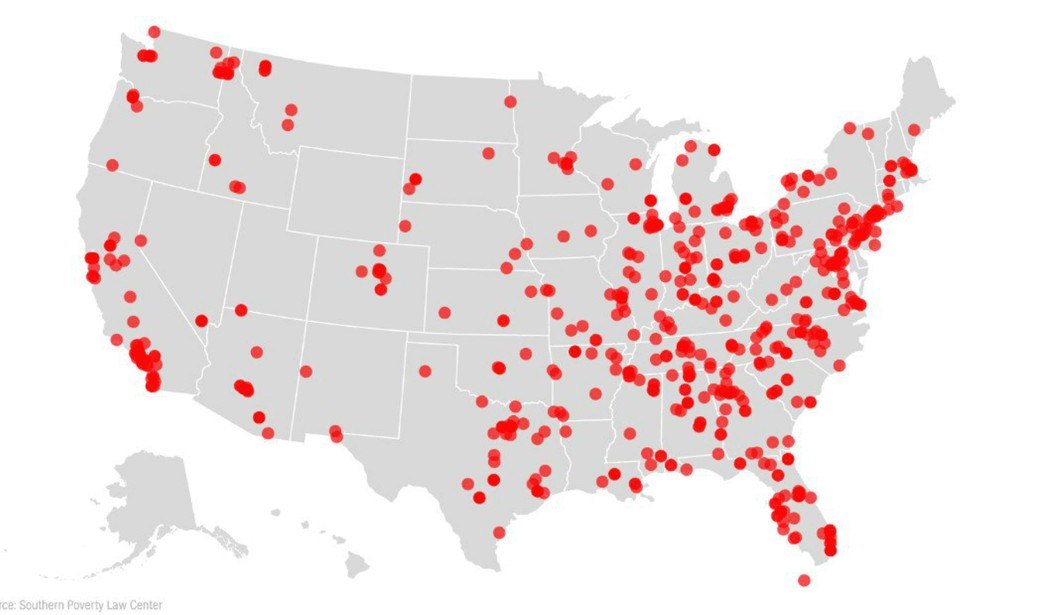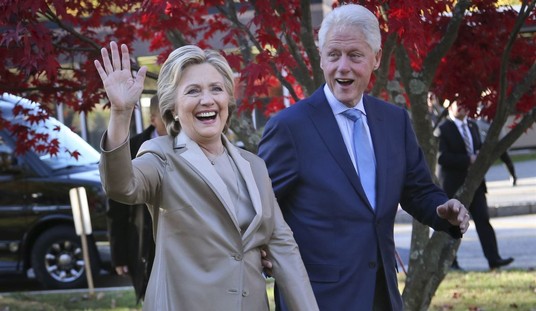In 2015, the Southern Poverty Law Center (SPLC), a far-Left defamation racket connected to at least one terror attack, paid $1.8 million to a liberal fundraising outfit that admitted it tells prospective donors it sends 100 percent of donations to charities it fundraises for, while it really yields a zero percent return for those charities.
The SPLC’s Form 990 from 2015 listed “Grassroots Campaigns, Inc.” (GCI) in Boston, Mass. as its top independent contractor. The nonprofit paid GCI $1,803,961 in 2015 for “canvasser” services. Later on in the form, the SPLC listed GCI on its “fundraising activities” section. The nonprofit reported paying $1,811,174 for “canvassing” services, and only receiving $623,596 in return — a net loss of $1,187,578.
Such losses are not uncommon, according to a 2011 exposé on GCI published by SF Weekly. The paper’s Taylor Friedman reported that canvassers for GCI pound the pavement in t-shirts advertising Planned Parenthood or the ACLU. They try to convince people on the street to contribute to these organizations, and if a prospective donor asks how much of his or her donation goes to Planned Parenthood, the canvasser says, “100 percent.”
This is a lie, Friedman reported. “In fact, most of the nonprofits are expected to receive zero percent after expenses — as was the case eight out of nine times in California last year,” the SF Weekly reporter wrote. “GCI’s charity clients rarely make any revenue during a campaign, and may not see returns for years down the line. Yet GCI and the charities it works for continue to defend the ‘100 percent goes to the nonprofit’ claim.”
Why does GCI continue to defend the claim? Because it sends the money directly to the nonprofit — right before it sends them the bill. As Friedman noted, California law stipulates that “all of the money GCI collects must initially be placed in the nonprofit’s custody.” Then GCI charges the nonprofit, and it usually charges at least as much as it raised.
“Just one small caveat people on the street never hear: GCI bills the charity, usually on a weekly basis, and that bill could total thousands of dollars,” Friedman explained.
Here’s the beef: “Telling people that 100 percent of their donations will go to charity is akin to telling restaurant patrons that meals are free … until the check arrives.”
According to SF Weekly, GCI freely admitted — in publicly accessible documents — that the fundraising outfit estimates a net return of zero percent to charities it works with. Question 11 on the Massachusetts Attorney General’s Form 10A asks commercial fundraisers, “If prospective contributors ask how much of their contributions will go to the charitable organization, what will they be told?”
GCI responded, “We estimate that after expenses roughly 0% of the average donor’s contributions will go to the charity.” Wow.
Question 10 asked for the “approximate percentage of gross receipts that the charitable organization will receive or retain.” The answer, once again: zero percent.
GCI Vice President Wes Jones tried to explain why. “You seem to place no value on the visibility, public education, and grassroots campaigning work that groups are hiring us to provide, in addition to building the membership base and raising money, when they hire us to canvass,” Jones told SF Weekly.
From a nonprofit’s perspective, it is important to build up a donor list, to extend visibility, and to push the nonprofit’s message on the street. But it would still be a lie for GCI representatives to say that 100 percent of the donations go directly to the charity, as SF Weekly reported that they do.
The Southern Poverty Law Center did not respond to multiple requests for comment, clarifying what the organization paid GCI for and why this “poverty law” organization in Alabama was sending nearly $2 million to a company in Massachusetts for canvassing services.
It is extremely unfair to tell donors that 100 percent of their contributions go to the charity when GCI actually pockets more than those contributions in costs billed to the organization. Any donor to the SPLC should be outraged that in 2015, GCI only gave the group $623,596 while charging almost three times more than that ($1.8 million).
Then again, donors to the SPLC should also be outraged at the organization’s two transfers of $2.2 million to the Cayman Islands in 2014.
While Fox News’s Greg Gutfeld inaccurately reported that the SPLC only spends $61,000 on legal costs (that is the number for internal legal services), the real number for out-of-pocket case costs ($1.85 million) is still less than the organization spent on “postage & shipping cost” ($3 million), according to the Form-990.
In a letter sent to Fox News demanding a retraction, the SPLC said the $61,000 figure was far too small, cited the $1.85 million figure, and tried to suggest that the real cost of its legal services was $15 million in 2015. But the sticky language made this argument rather tenuous.
“In fact, our publicly available audited financial statements show that during that same fiscal year the SPLC spent more than $15 million on initiatives on behalf of its clients that were directed by the legal department,” the letter declared. Rather than explicitly saying the organization spent $15 million on legal cases, it hedged, mentioning “initiatives on behalf of its clients … directed by the legal department.”
Just because something is “directed by the legal department” does not necessarily mean it is a court case or legal action. Indeed, the SPLC website lists Morris Dees as a “chief trial attorney” when in fact he is known to be a fundraiser.
Even if the SPLC did spend $15 million on legal cases, that is a pittance compared to its $328 million in assets, and almost as much as the “compensation to disqualified persons,” which the 2015 Form-990 lists as $14.5 million. This number also pales in comparison to the $50 million the organization raised in 2015, and that was before recent events led to very public contributions this year.
Following the white nationalist riots in Charlottesville, Va., Apple pledged $1 million to the SPLC, along with other key benefits, while J.P. Morgan chipped in $500,000. Companies like Lyft and MGM Resorts have partnered with the group, while Pfizer, Bank of America, and Newman’s Own have each contributed over $8,900 to the SPLC in recent years.
The group has also received support from the mainstream media and notable Democrats. Just last week, Sen. Al Franken (D-Minn.) cited the SPLC, comparing an organization on its list of “hate groups” to the genocidal Cambodian dictator Pol Pot. CNN, NBC, and ABC have parroted the SPLC’s “hate group” designations (which compare mainstream Christian and conservative groups to the Ku Klux Klan). CNN even posted the group’s “hate map,” which inspired a terror attack in 2012.
917. That's the number of hate groups operating in the US, according to data from the Southern Poverty Law Center https://t.co/hsuBqjal9y pic.twitter.com/eMWFiLECfz
— CNN (@CNN) August 17, 2017
In August of that year, Floyd Lee Corkins II broke into the Family Research Council (FRC), a Christian nonprofit in Washington, D.C., armed with a semi-automatic pistol and Chick-Fil-A chicken sandwiches. He shot an unarmed security guard in the attempt to kill everyone in the building.
Corkins pled guilty to committing an act of terrorism and was sentenced to 25 years in prison. He later testified to the FBI that he intended to move on to other groups after decimating the FRC, and that he targeted these groups because they were listed as “anti-gay groups” on the SPLC website.
This past summer, James Hodgkinson opened fire at a Republican practice for the Congressional Baseball Game, nearly killing Rep. Steve Scalise (R-La.). Hodgkinson had “liked” the SPLC on Facebook, and the SPLC had repeatedly attacked Scalise as a white supremacist, even after he apologized for giving one speech to a white nationalist organization (and was attacked as a traitor by former KKK leader David Duke).
Even if the “hate map” had not been directly linked to a terrorist attack, the SPLC’s list of “hate groups” is extremely problematic.
The “hate group” list features Christian organizations like D. James Kennedy Ministries, FRC, Liberty Counsel, the American Family Association (AFA), and Alliance Defending Freedom (ADF), along with other groups like the American College of Pediatricians and the Center for Immigration Studies. It also lists Muslim reformer Maajid Nawaz and women’s rights activist Ayaan Hirsi Ali as “anti-Muslim extremists.”
Recent scandals suggest that the SPLC is careless in listing “hate groups.” Last month, the group removed the innocent historic town of Amana Colonies from its “hate map.” While the SPLC eventually removed Amana Colonies, it first defended the “hate” label because a white supremacist website claimed to have had a book club in one of the town’s restaurants.
In a series of three videos, the anti-terror group Quilliam International revealed the SPLC’s ever-changing reasons for listing Muslim Maajid Nawaz as an “anti-Muslim extremist.” One of the reasons the SPLC gave for targeting Nawaz? His visit to a strip club for his bachelor party.
Furthermore, the SPLC also posted a list of every Confederate monument in the United States, warning of “turmoil and bloodshed” if they were not all taken down. But the list — complete with its own map which looks eerily similar to the “hate map” that inspired the FRC attack — also marked elementary schools, middle schools, and high schools.
While it may be unlikely for another terrorist like Corkins to use such a map to attack schools, the controversy over Confederate monuments has indeed inspired many protests, some of which have become violent. No student deserves to have to walk to school through a violent protest.
As for the SPLC’s ultimate goals, former spokesman Mark Potok was terrifyingly candid. “Sometimes the press will describe us as monitoring hate groups, I want to say plainly that our aim in life is to destroy these groups, completely destroy them,” he said.
Potok later explained that the SPLC’s criteria for a hate group “have nothing to do with criminality, or violence, or any kind of guess we’re making about ‘this group could be dangerous.’ It’s strictly ideological.” Given the groups listed as “hate groups,” the SPLC’s liberal and anti-Christian slant could not be more apparent.
Indeed, some have argued that because the SPLC lists “anti-LGBT hate groups,” they would have to list the Roman Catholic Church to be consistent. In the section attacking Ruth Institute President Jennifer Roback Morse, the SPLC quotes the Catechism of the Roman Catholic Church.
Many of the targeted organizations have sued the SPLC for defamation. D. James Kennedy Ministries, Liberty Counsel, and Maajid Nawaz have each filed defamation lawsuits against this organization.
It may not be surprising that a group like the SPLC — which lists innocent towns on the very “hate map” that inspired a terrorist attack, and innocent schools on a similar map, and brands mainstream organizations as “hateful” on the level of the Ku Klux Klan — would partner with a deceptive organization like GCI. Both groups seek to profit off of Left-wing political causes while bilking donors and demonizing conservatives.
Even so, it is important for Americans — and especially for liberal donors — to know just what the SPLC spends its money on, and that it partners with a fundraising outfit that blatantly lies to donors.









Join the conversation as a VIP Member